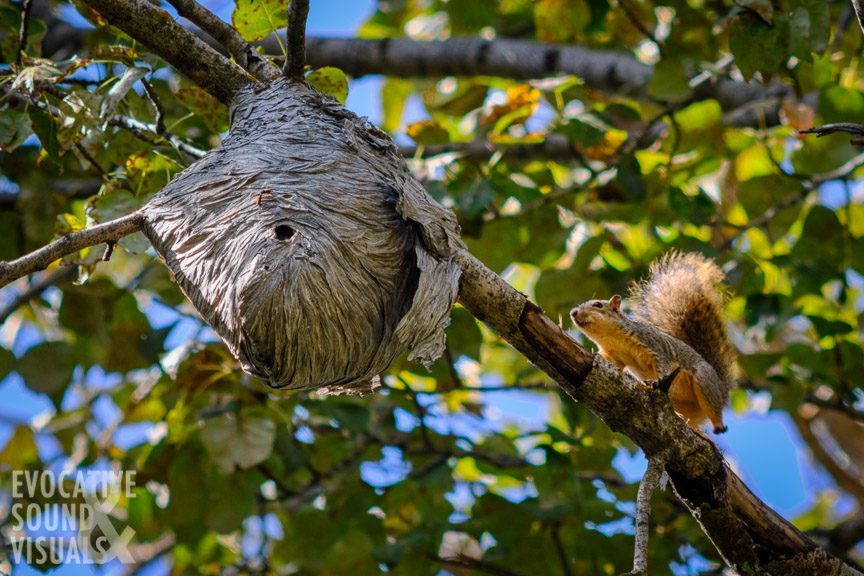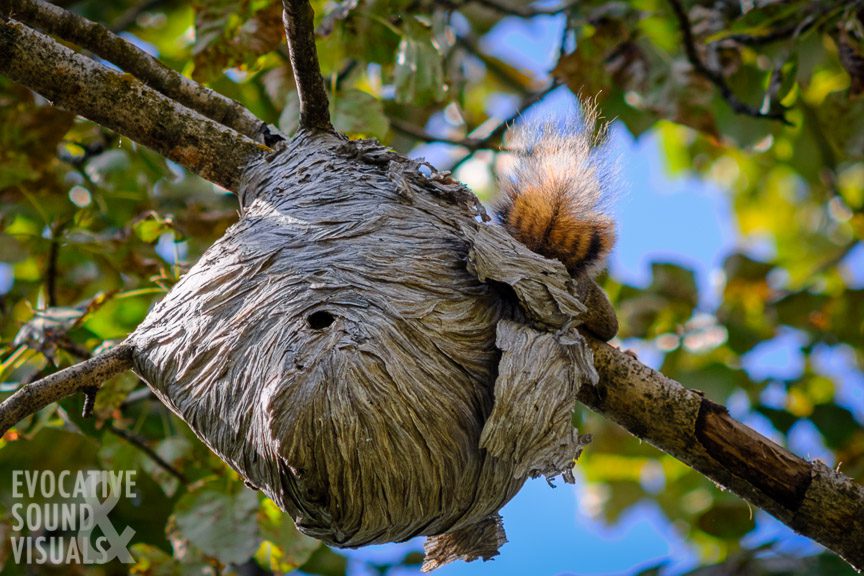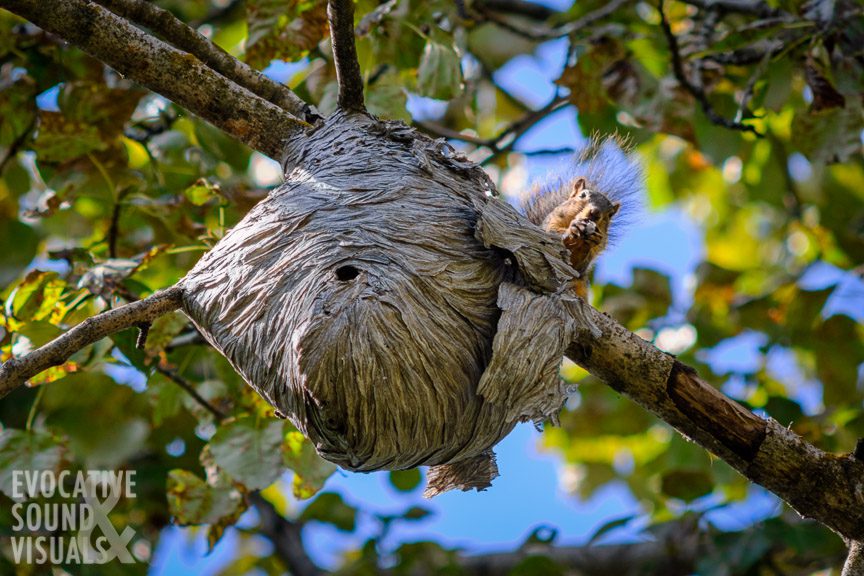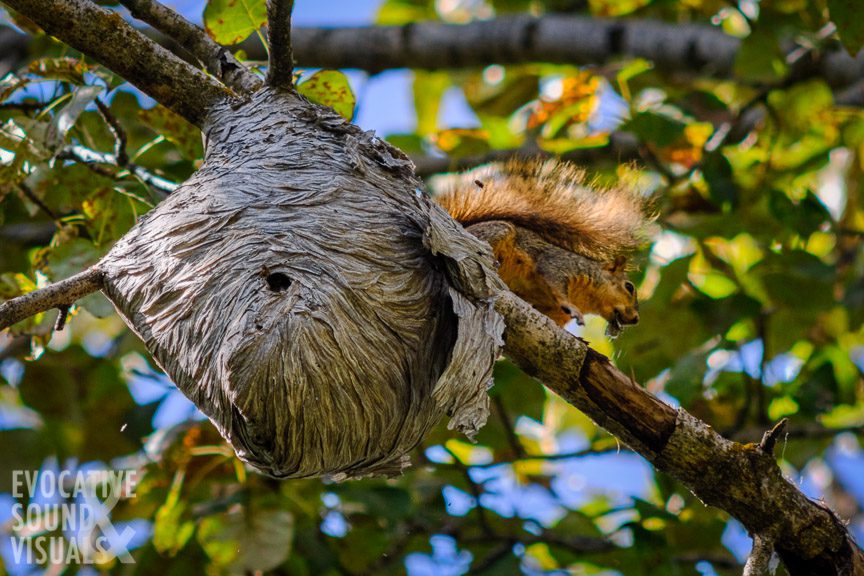



Sharp-eyed striders walking the Greenbelt in Garden City this summer most likely saw, if they were looking up that is, a hefty quantity of gray paper nests hanging from the cottonwoods that line the riverbank. Crafted by bald-faced hornets, these basketball-sized, egg-shaped beauties can house a colony of up to 700 workers and their queen during the summer months.
While some winced and wanted them taken down (by the city most likely), entomology-inclined others like myself admired the frequency and complexity of these multi-layered paper envelope structures, hidden for the most part among the leaves, and created in a matter of months by busy workers chewing the wood fibers all around them and spitting them back up.
Bald-faced hornets are omnivores. They’re beneficial to have around. They eat flies and spiders and their much more aggressive yellowjacket cousins. Plus they slurp down flower nectar on the side. Get too close and you’ll make them extra angry, as I, unfortunately, did years ago while mowing grass from the seat of an old red farm tractor. I brushed along a chain-link fence where a colony had made its nest, unleashing a cloud of hornets that darted straight for my eyes. A defense tactic I later learned they do to temporarily blind their aggressor). I was stung only once, but it was like a punch to the face. Of course, your results will be far more serious if you’re allergic. If that’s the case, stay clear.
Quite a few of the nests are starting to come down. Not by the hands of man or from strong wind, but through the unflinching labors of the unassuming and pesky squirrel. Squirrels are ever-present along the Greenbelt and from what I observed, determined in their attempts to feast on the larvae inside. It must be quite good. I photographed an attacking squirrel this afternoon advancing and retreating several times from an active nest in its mission to eat the tasty treats.
I had no idea squirrels did this to hornet’s nests. After all, they’re nut eaters, right? Squirrels are not alone in their fondness for hornet larvae either. The Japanese giant hornet, three to four centimeters in length and a sub-species to the even larger Asian giant hornet, has been baked, boiled and fried for centuries. They are eaten as snacks and served as a rice dish called hachinoko. Synthetic versions of the amino acid secreted by the larvae are being marketed to endurance athletes as nutritional supplements.
In Germany, under the Federal Nature Conservation Act, you can be fined for disturbing the balance of nature, e.g., knocking down a hornet’s nest. As for me, I am content to admire and photograph them. As for the squirrels, I say the best of luck.

